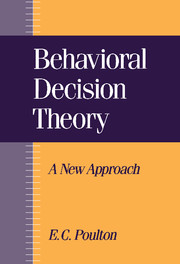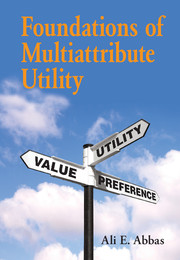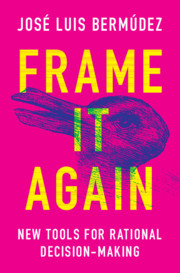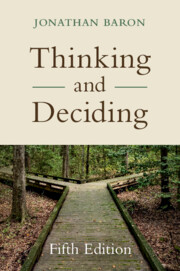Behavioral Decision Theory
This book discusses the well-known fallacies of behavioral decision theory. It shows that while an investigator is studying a fallacy, he or she may introduce without realizing it, one of the simple biases that are found in quantifying judgments.
The work covers such fallacies as the apparent overconfidence that people show when they judge the probability of correctness of their answers to two-choice general knowledge questions using a one-sided rating scale; the apparent overconfidence in setting uncertainty bounds on unknown quantities when using the fractile method; the interactions between hindsight and memory; the belief that small samples are as reliable and as representative as are large samples; the conjunction fallacy for Linda and Bill; the causal conjunction fallacy; the regression fallacy in prediction; the neglect of the base rate in the Cab problem, in predicting professions, and in the Medical Diagnosis problem; the availability and simulation fallacies; the anchoring and adjustment biases; Prospect theory; and bias by frames.
The aim of this book is to help readers to learn about the fallacies and to avoid them.
Reviews & endorsements
"This work represents a major contribution to methodology in the study of human decision making....The book is an outstanding piece of scholarship. It is thorough and authoritative. It provides an original, penetrating, cogently-argued, challenging re-analysis and re-assessment of many of the most infuential studies in the field of human judgement....it throws light on apparent conflicts and paradoxes in the literature and it provides students and researchers with many helpful insights that will enable them to optimise the design of experiments on human judgement....this book looks set to become a standard reference work for students and researchers in the field of human judgement." Raphael Gillett, Applied Cognitive Psychology
"The book is well organized, with separate chapters devoted to each of the major biases....The author has incorporated several reader-friendly devices, such as chapter summaries, as well as sections in all the major chapters on practical examples of the bias described in the chapter and how to avoid it. The helpfulness of these sections varies greatly: Poulton does an excellent job of depicting the dangers that availability can lead to in clinical diagnosis....Poulton emphasises the limitations of behavioral decision research....Because of Poulton's methodological bent, he dissects key experiments- especially Kahneman and Tversky's seminal research-in more detail than do other introductory texts." Applied Cognitive Psychology
Product details
September 1994Hardback
9780521443685
336 pages
237 × 160 × 21 mm
0.64kg
36 b/w illus. 46 tables
Available
Table of Contents
- 1. Outline of heuristics and biases
- 2. Practical techniques
- 3. Apparent overconfidence
- 4. Hindsight bias
- 5. Small sample fallacy
- 6. Conjunction fallacy
- 7. Regression fallacy
- 8. Base rate fallacy
- 9. Availability and simulation fallacies
- 10. Anchoring and adjustment bias
- 11. Expected utility fallacy
- 12. Bias by frames
- 13. Simple biases accompanying complex biases
- 14. Problem questions
- 15. Training
- 16. Uncertainties.






